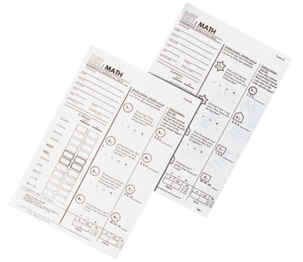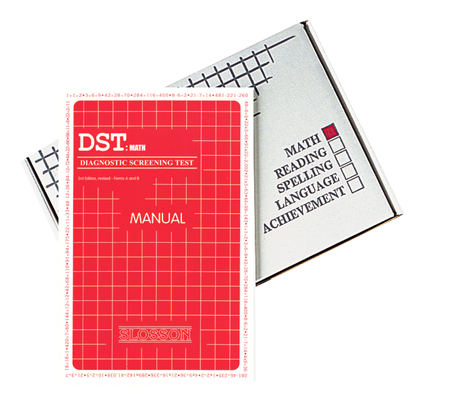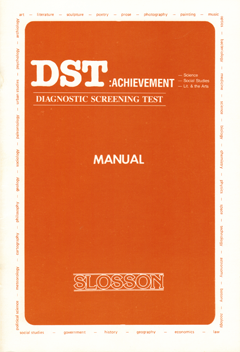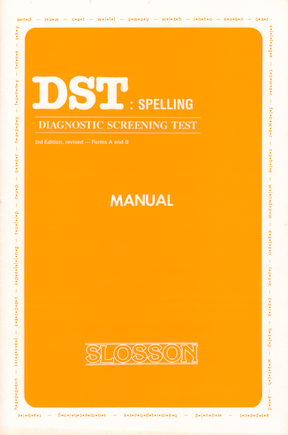Order the Entire DST Battery and Save!
Thomas D. Gnagey
(DSTM) Diagnostic Screening Test: Math - Third Edition
Quantity Instructor Discount Available for the DSTM.....Refer to Promos Page
The DSTM taps a separate math concept with items divided into two testing sections in order to facilitate the diagnostic process, with a Test Form A and Test Form B available for both testing sections. The first of these is the Basic Processes Section, composed of 36 items arranged developmentally within four major areas.
Four Major Areas of the Basic Processes Section:
1. Addition Skills: 1st through 5th Grade Mastery Levels
2. Subtraction Skills: 1st through 6th Grade Mastery Levels
3. Multiplication: 3rd through 8th Grade Mastery Levels
4. Division: 3rd through 9th Grade Mastery Levels
Each of these areas within the Basic Processes Section yields a separate Grade Equivalent Score and Consolidation Index Score. Test Form B was developed using problems identical in Test Form A of the Basic Processes Section, except for changes in specific numbers used. Nine supplemental areas (referred to as Sub-scales) are also scored within the Basic Section.
Basic Processes Section - Nine Supplemental Areas:
1. Process: Understands when to apply each basic process.
2. Sequencing: Figuring the next number in a sequence
3. Simple Computation: Computing very simple problems in
all four areas to assess knowledge of applying processes.
4. Complex Computation: Computing difficult problems in
all four areas utilizing advanced number facts.
5. Special Manipulations: Includes those specialized
processes unique to each basic process such as carrying,
regrouping, remainder, etc.
6. Use of Zero: Computation in basic areas in which the zero
concept must be understood and utilized.
7. Decimals: Computation in basic areas in which the zero
concept must be understood and utilized.
8. Simple Fractions: Computation in each of the four basic
processes utilizing fraction concepts.
9. Manipulation in Fractions: Computation in each of the
four basic processes utilizing advanced fraction concepts
(i.e. reducing, common denominators, mixed numbers, etc.)
The other testing division is the Specialized Section, which utilizes 37 to 45 items to evaluate the student’s conceptual and computational skills in five areas commonly taught in most math programs. Questions and Answers of Test Form A and B remain the same within the Specialized Section. Grade Equivalent Scores and related Consolidation Index Scores for each of the five areas are computed, along with a Total Specialized Section Score.
Skills Assessed in the Specialized Section:
Money: 2nd through 5th Grade Mastery Levels
Time: 1st through 8th Grade Mastery Levels
Percent: 4th through 9th Grade Mastery Levels
U.S. Measurement: 4th through 10th Grade Mastery Levels
Metric Measurement: 4th through 10th Grade Mastery Levels
Eighty teachers in grades 1 through 10 were surveyed to determine which math concepts they expected students to have mastered prior to entry into their grade, and which they expected the average student to master during the year in the grade each teacher taught. Several items were re-written to eliminate extraneous concepts, with each test item being assigned a Grade Equivalent as suggested by the test data.
Grades: 1 through 12
Administration: Individual or Group Settings










